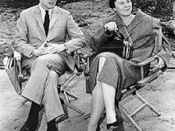To Kill a Mockingbird Using literary skills in the right way can have a amazing effect on the quality of a novel. This is proven true in Harper Lee?s novel, To Kill a Mockingbird. Harper Lee uses descriptions that appeal to the reader?s sight, which helps them to visualize the setting. She uses personification to relate non-human objects in the setting to the reader. Lee uses adjectives that suggest different feelings, which help the reader to better understand the setting. Harper Lee uses descriptive language to enhance the setting of To Kill a Mockingbird.
First of all, the descriptions appeal to the reader?s sight, which help them to visualize the setting. ?Td. The use of that colour creates a sense of the atmosphere and helps the reader to visualize the setting.
Secondly, Lee uses personification to relate non-human objects in the setting to the reader. ?Tired old town? (Lee pg.11)
is an example of personification. People have experienced e their experiences to the town. Another example of personification is: ?The remains of picket drunkenly guarded the front yard.? (Lee pg.15). Lee gives human characteristics to the fence by telling the reader that it is drunk. People relate drunkenness to clumsy, slow, dumb and improper, therefore the reader pictures an ol great job of protecting the yard. The use of personification in To Kill a Mockingbird has a great effect on the setting.
Finally, Harper Lee uses adjectives that suggest different feelings, which contribute to the reader?s understanding of the setting. For example:fore perceive the setting as scarier and more fearful then they originally thought. Another example of this device is when Lee is describing the Radley home, ? Rain-rotted shingles drooped over the eaves of the veranda? (Lee pg.15). The word drooped suggests feelings of depression, sadness...


